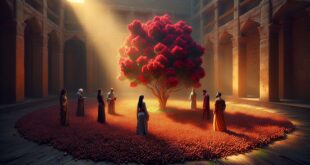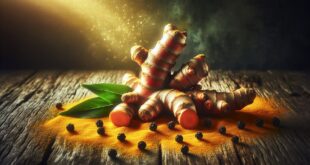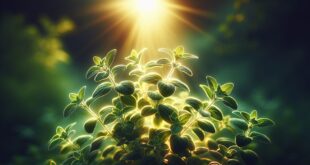 Herbal astrology, or what’s often known in scholarly circles as astrological herbalism, traces its roots back to times when the sky served as a celestial map, guiding everything from planting seasons to medical practices. This wasn’t merely whimsical; it was a thoughtful blend of the Earth’s natural resources with the heavenly bodies. You see, before modern medicine took over, our ancestors looked to the stars for guidance, using what we now term as planetary medicine to treat ailments holistically.
Herbal astrology, or what’s often known in scholarly circles as astrological herbalism, traces its roots back to times when the sky served as a celestial map, guiding everything from planting seasons to medical practices. This wasn’t merely whimsical; it was a thoughtful blend of the Earth’s natural resources with the heavenly bodies. You see, before modern medicine took over, our ancestors looked to the stars for guidance, using what we now term as planetary medicine to treat ailments holistically.
You might wonder, how did they make these connections? Let me explain. Each planet was believed to govern specific herbs, imbuing them with distinct healing properties. For instance, the sun, symbolizing vitality, was linked with heart-strengthening plants like rosemary and chamomile. The moon, all about reflection and intuition, corresponded with nurturing herbs such as jasmine and watercress. It was this profound relationship with nature that formed the backbone of what we often refer to as holistic healing — treating the body, mind, and spirit as one interconnected entity.
But how did they figure all this out without Google or the latest research papers? Well, it was their deep observations and an innate sense of rhythm with the natural cycles. Think about it: night follows day, and spring follows winter. Just like clockwork, yet endlessly magical. As Ralph Waldo Emerson put it, “The creation of a thousand forests is in one acorn.” Our ancestors understood this, seeing the macrocosm of the universe mirrored in the microcosm of a medicinal herb.
And honestly, don’t you think that kind of knowledge is both awe-inspiring and humbling? Today, as we explore the remnants of these practices, we find that many are still relevant. They reveal a time when every herb and root was revered, not just for its physical healing properties but also for its ability to nourish the soul.
So, as we sit beneath the same stars they gazed upon, perhaps it’s worth pausing to reflect: What ancient wisdom might we unearth today? And more importantly, how can that wisdom heal not just our bodies, but our fragmented spirits?
modern-day practices and applications
In today’s bustling world, amidst the noise of technology and endless commotion, some individuals are returning to ancient practices for solace and healing. These practices may not be the fast-paced solutions we are accustomed to; instead, they offer something profound. The intriguing world of herbal astrology isn’t just dusty history — it’s being interwoven with modern wellness routines, and people are taking notice.
So, what do these ancient practices look like today? You might be surprised. From self-care regimens featuring conscious use of plants aligned with celestial movements to holistic healing centers integrating astrological herbalism into their offerings, there’s a revival happening. Folks are increasingly interested in living more harmoniously with the cosmos. It’s like bringing a slice of the universe into their daily routine. And why not? Plants have been humming the song of the stars for centuries.
Take, for example, the renewed enthusiasm for moon gardening. This practice, deeply rooted in history, makes a comeback as folks plan their plantings by lunar phases. The lunar influence is believed to affect water in plants and soil, much like it does in tides. By tuning into these celestial rhythms, people claim to see fuller blooms and juicier harvests. It’s gardening that dances to the rhythm of the night sky.
What about mainstream wellness? Here’s the thing: essential oils and herbal supplements are being chosen not just for their aromas or taste but for their planetary connections. Someone might use lavender for peace under the influence of Mercury, aiding communication and calm during challenging times. Or perhaps a tea blend incorporating Mars-aligned herbs to invigorate courage may give a boost when life’s hurdles appear.
Even meditation circles and eco-conscious retreats have incorporated the idea of plant alignments. They use this knowledge to craft experiences that are both physically rejuvenating and spiritually enriching. These gatherings often feature teas, incense, and balms selected for the astrological season or planetary influences. It’s not just about the scent or taste — it’s about cultivating a spiritual connection, an introspective journey to align one’s energies with the universe. As Carl Sagan once said, “We are made of star stuff.” This practice reminds us of that cosmic bond.
And let’s not overlook technology. Yep, there’s an app for that! Many people turn to astrology apps or online platforms that offer guidance on which herbs complement their birth charts or current planetary transits. It’s like having a celestial guide in your pocket, merging ancient wisdom with the tap of a screen. These tools do more than forecast your day; they help you weave plant magic into your lifestyle.
Certainly, skeptics might roll their eyes, questioning the scientific backing. And sure, not every claim rings with the clarity of proven fact. Yet, many find that the journey alone provides purpose, connectedness, and a deep-seated peace. This modern embrace of herbal astrology calls us back to a simpler time — when we listened, truly listened, to the wind and stars.
So, while some reach for mainstream medicine, others are finding room in their heart (and their homes) for these ancient practices, not as an alternative but a complement. How refreshing it is to realize a quiet revolution is blossoming, blending the wisdom of the cosmos into modern-day healing practices. Perhaps, in walking this path, we discover not just a connection with the universe but also a deeper understanding of ourselves.
science and spirituality: bridging the gap
 Science often stands at a distance, scrutinizing the spiritual with its microscope, while spirituality gazes with wonder, seeking meaning beyond quantifiable data. But every now and then, these two perspectives converge—a dance of logic and intuition, creating something richer. So, where do we see this interplay when it comes to herbal astrology? Let’s have a look.
Science often stands at a distance, scrutinizing the spiritual with its microscope, while spirituality gazes with wonder, seeking meaning beyond quantifiable data. But every now and then, these two perspectives converge—a dance of logic and intuition, creating something richer. So, where do we see this interplay when it comes to herbal astrology? Let’s have a look.
Scientific minds today prefer tangible proofs, grounded in empirical evidence. And sure, not every ancient belief aligns seamlessly with the rigors of modern science. But when it comes to plant-based healing, science is starting to catch up with age-old spiritual insights. It’s like discovering that locked door everyone’s been bypassing and realizing the key’s been hidden in plain sight. For example, the effects of herbs on the human body, once considered mystical, are now being examined through the lens of modern research.
Take the case of chamomile, linked with the sun in astrological herbalism. Science has confirmed its calming properties, aligning with its solar influences that uplift vitality. Rosemary, another sun herb, is shown to have cognitive benefits. It’s almost as if these herbs want to tell us their stories, their interconnectedness with the heavens resonating in our day-to-day life.
Moreover, the emerging field of planetary medicine often incorporates herbal astrology as a complementary approach to healing. Modern practitioners recognize that the soothing essence of certain plants may mirror the energies of the planets they are associated with. This isn’t about reducing everything to chemical compounds; it’s about recognizing a deeper dialogue between the cosmos and our own biology.
Skeptics may remain wary, arguing the science needs more backing. Yet consider this: Energy medicine and holistic practices are widely studied for stress relief and emotional well-being, tying the physical with the perceptual. As renowned physicist Niels Bohr once said, “The opposite of a profound truth may well be another profound truth.” This notion frames the understanding that both science and spirituality can offer valid insights into our holistic healing processes.
There’s also a real-world practicality in bridging this gap. Herbal astrology encourages mindfulness, urging us to reconnect not just with our inner selves but with nature’s cycles. How often do we race through our days, forgetting to pause and breathe, let alone notice the changing moons or the first blush of spring? In slowing down and engaging with these practices, we naturally cultivate a sense of calm, much like a farmer attuned to the seasons, reaping nature’s rewards through patience and attunement.
In the fast-paced tech era, does this integration sound appealing? It ought to. Synchronizing with natural rhythms can offer respite from the constant churn of digital life. Even if you’re not one for meditation, a walk with purposeful reflection or tending to a herb garden — knowing those plants have stories rooted in celestial origin — can ground you in a unique way that no app ever could.
Ultimately, bridging the chasm between science and spirituality in the realm of herbal astrology isn’t about making converts, but about fostering understanding. It’s about weaving strands of ancient knowledge with threads of modern insight to reveal patterns both comforting and enlightening, like listening to an old story finding its voice in a new world. Can we see the universe’s reflection in a single leaf? Perhaps — just perhaps.
 DS Haven In Light Of Things
DS Haven In Light Of Things






